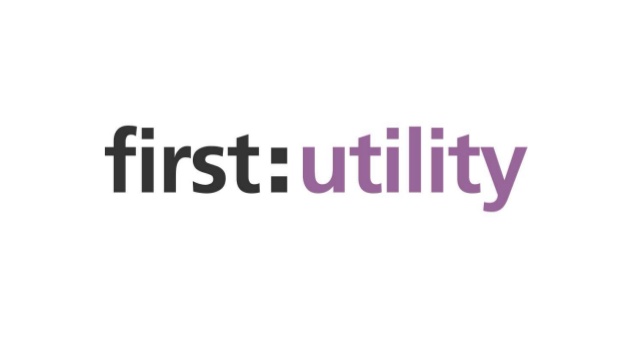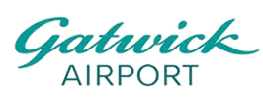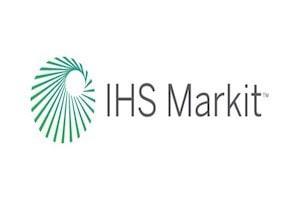You Ask, We Answer: Docker Versus Containerization Alternatives
Here at Sirius Open Source, we often get asked, "How does Docker compare to other containerization tools like Podman or containerd?". This is a very good question, and one that deserves a clear, honest answer. Consumers are naturally fascinated with comparisons and actively search for the best option before making a critical purchasing decision. We understand that selecting a foundational platform like Docker is a decision a business will have to live with for years.
We want to be upfront: Docker cemented its status as the industry standard for containerization, offering major gains in portability and speed. However, the market is undergoing a critical phase shift, moving away from monolithic engine designs toward more secure, specialized, and Kubernetes-native components. The truth is, Docker’s long-standing architectural design and recent commercial changes make alternatives strategically superior for specific high-security or cost-sensitive enterprise needs.
This article will explain the deep, critical differences between Docker and its major alternatives, focusing on architecture, security, cost, and alignment with modern production workflows. We aim to be fiercely transparent, allowing you to understand which platform is truly the best fit for your specific organizational requirements.
1. The Core Architectural Divide: Docker vs. Podman
The most significant distinction among leading container engines is the underlying architectural design, which fundamentally dictates operational overhead, stability, and security limits. When writing comparison content, it is crucial to address the pros and cons of each solution honestly.
Docker Engine: The Daemon-Centric (Legacy) Model
Docker relies on a classic client-server architecture, which depends on a centralized, persistent background service known as the Docker Daemon (dockerd). The Docker CLI communicates with the daemon via a RESTful API to manage all container functions.
While familiar and widely adopted, this centralized design introduces two critical vulnerabilities:
- Single Point of Failure (SPOF): Because dockerd centrally controls all containers, if the daemon process crashes due to resource exhaustion or error, all containers managed by that daemon immediately stop running.
- Privilege Escalation Risk: Docker’s original design required the daemon to run with root privileges to manage system resources. This root-privileged dependency creates a massive security liability, making the daemon a potential "preferred gateway for attackers".
Podman: The Daemonless (Cloud-Native) Model
Podman (developed by Red Hat) was designed with a direct focus on security and cloud-native requirements, operating without a centralized daemon. Instead, Podman uses a standard fork-exec process model. When a container is started, Podman interacts directly with the Linux kernel, and the container runs as an independent child process of the initial CLI command.
This architectural choice offers enhanced stability by removing the SPOF; the failure of one container process does not cascade into a halt of all container services. Podman is explicitly designed to be a drop-in replacement for the Docker CLI, allowing most existing commands to be executed simply by substituting docker with podman.
| Feature/Metric | Docker Engine | Podman Engine |
|---|---|---|
| Architecture | Daemon-based (Client-Server) | Daemonless (Fork-Exec Process Model) |
| Security Risk | Single Point of Failure (Daemon); Privilege escalation risk | Enhanced isolation; No SPOF |
| Default Privilege | Typically Requires Root (for daemon process) | Rootless by Default |
| Networking Standard | Built-in Docker Network solutions | Relies on CNI (Kubernetes-native integration) |
2. Security, Performance, and the Rootless Imperative
Security has become a primary driver of platform adoption, and the emergence of the rootless container model offers a robust defense against privilege escalation attacks.
Default Security Posture
Docker’s long-standing requirement for root access establishes a high-value target for attackers. Although Docker supports rootless operation, enabling and configuring this mode requires explicit administrative effort.
In contrast, Podman is fundamentally rootless by design. Podman’s architecture enables containers to run as non-root users from the start, significantly minimizing the "blast radius" of a successful exploit, preventing immediate access to the entire host system. This inherently safer baseline configuration often makes Podman the preferred choice in high-security government systems and multi-tenant environments. Furthermore, Podman leverages advanced isolation features like Linux User Namespaces and facilitates robust support for SELinux, strengthening the foundational security posture for highly regulated industries.
Performance and Efficiency Benchmarks
Podman exhibits measurable advantages in runtime efficiency, which is crucial for Continuous Integration/Continuous Delivery (CI/CD) pipelines and highly optimized environments:
- Startup Time: Podman containers start faster (approximately 0.8 seconds average) compared to Docker (approximately 1.2 seconds average). This latency difference translates to substantial cumulative time savings in automated workflows.
- Memory Footprint: Because Podman has no persistent background daemon consuming resources, it demonstrates a lower idle memory footprint (approximately 85 megabytes baseline) compared to Docker (approximately 100 megabytes or more). This optimization is critical for environments like Edge Computing or high-density Virtual Machines.
3. Commercial Comparison: TCO and Licensing Friction
The competitive landscape is heavily influenced by the Total Cost of Ownership (TCO), particularly regarding licensing.
Docker Desktop Licensing as Mandatory OPEX
Docker's shift in 2021 made Docker Desktop—which bundles essential development tools like the Engine, CLI, and Compose—no longer free for commercial use in larger organizations.
Paid subscriptions (Pro, Team, or Business) are mandatory for organizations that exceed either of these two thresholds:
- Annual Revenue greater than $10 million.
- Employee Count greater than 250.
This structure transforms Docker Desktop into a significant, mandatory operating expense (OPEX). For large organizations, non-compliance represents a legal and governance risk, while the high license fees introduce procurement friction.
Podman Desktop: The Zero-Cost Alternative
In direct contrast, Podman Desktop is entirely free, open-source, and licensed under vendor-neutral terms. It provides a capable Graphical User Interface (GUI) for managing containers and Kubernetes workflows on all major operating systems.
The disparity in licensing models creates a compelling financial impetus for migration. For large enterprises, the zero-cost licensing of Podman Desktop offers TCO savings that can amount to thousands of dollars in annual expenditure, serving as a powerful economic forcing function.
4. Kubernetes Integration: Runtimes and Workflows
Kubernetes (K8s) has become the industry standard for orchestration. In production clusters, the traditional monolithic container engine is replaced by highly specialized, CRI-compliant runtimes.
The Obsolescence of Docker Engine in Production K8s
The Docker Engine relied on a compatibility layer called dockershim to interface with Kubernetes. This layer was deprecated and formally removed in Kubernetes releases after version 1.23. This change finalized the obsolescence of Docker Engine as a direct Kubernetes runtime in modern production environments. Production deployments must now use a fully CRI-compliant runtime.
Dedicated Production Runtimes: containerd vs. CRI-O
The market is split between two primary CRI-compliant runtimes, both of which manage image transfer, storage, and container execution on cluster nodes:
- containerd: This general-purpose runtime, originating from the Docker project, offers flexibility and can be used both within K8s and as a robust, standalone container daemon. It is favored in environments requiring proven standards and broader functionality.
- CRI-O: This runtime was designed exclusively for the Kubernetes Container Runtime Interface (CRI). Its minimalist focus results in reduced complexity, lower resource consumption, and a vastly reduced attack surface. This specialization makes CRI-O strategically valuable for high-security, minimalist, Kubernetes-only deployments where low operational overhead is paramount.
Streamlined Kube-Native Development
When comparing developer experience, Podman’s interoperability with Kubernetes standards is a critical advantage. Podman’s native support for the Kubernetes Pod construct and the podman play kube command allows developers to consume Kubernetes YAML manifests to run containers locally. This capability streamlines the workflow from local development to production Kubernetes clusters, fundamentally mitigating the traditional pain point of configuration drift that occurs when translating Docker Compose definitions into Kube YAML.
5. Contextual Alternatives: Building and Orchestration
Both Docker and Podman adhere to the Open Container Initiative (OCI) specifications, meaning images built on one platform are fully interchangeable and runnable by the other.
- Image Building: Docker generally maintains a maturity advantage in image building via Buildkit/Buildx. Podman uses separate, specialized tools: Buildah for daemonless image construction and Skopeo for image movement and signing. A hybrid approach—using Docker/Buildx for initial rapid development and Podman for secured execution—is a strong strategic option.
- System Containers (LXC): LXC (Linux Containers) is a distinct technology focused on system-level virtualization. It is used to run full Linux OS environments, often replacing traditional Virtual Machines (VMs), and is outside the typical scope of Docker or Podman microservices deployment.
- Orchestration: While Docker Swarm is a feature of Docker Engine, Kubernetes (K8s) remains the undisputed industry standard for managing container clusters at scale.
Strategic Recommendations
The decision between container platforms is strategic, driven by priorities regarding cost, security, and long-term cloud strategy.
| Use Case Scenario | Recommended Engine / Runtime | Justification |
|---|---|---|
| High-Security Servers / Multi-Tenant Systems | Podman (Engine) / CRI-O (K8s Runtime) | Daemonless architecture and default rootless security minimize the attack surface. |
| Large-Scale Enterprise Development (50+ Developers) | Podman Desktop (Engine) | Zero licensing cost provides significant TCO savings compared to required paid subscriptions for Docker Desktop. |
| Fast CI/CD Pipelines / Serverless | Podman (Engine) / CRI-O (K8s Runtime) | Superior container startup times and lower idle memory consumption optimize resource efficiency. |
| Microservice Local Development (K8s Focus) | Podman + Podman Desktop | Kube-native workflows (podman play kube) streamline the path from local development to production Kubernetes deployment. |
| Existing Legacy Docker Infrastructure | Docker Engine (Engine) / containerd (K8s Runtime) | Leverages existing familiarity and mature tooling (Docker Compose). containerd offers proven stability and broad general-purpose applicability. |
By honestly presenting the strengths and weaknesses of Docker compared to mature alternatives like Podman, which often present a better architectural and commercial fit for modern enterprise needs, organizations can move forward with confidence and avoid strategic vendor lock-in. The industry trend favors composable, specialized, and secure OCI tools as the strategic foundation for the next generation of cloud-native deployment.
















































